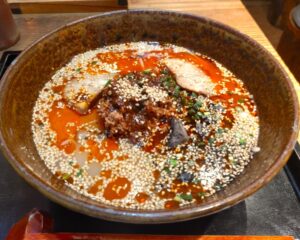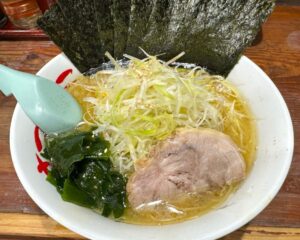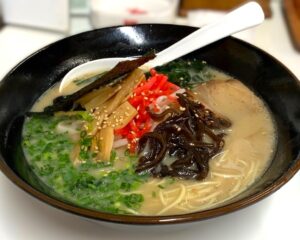Kagoshima Ramen (Kagoshima Pref.)
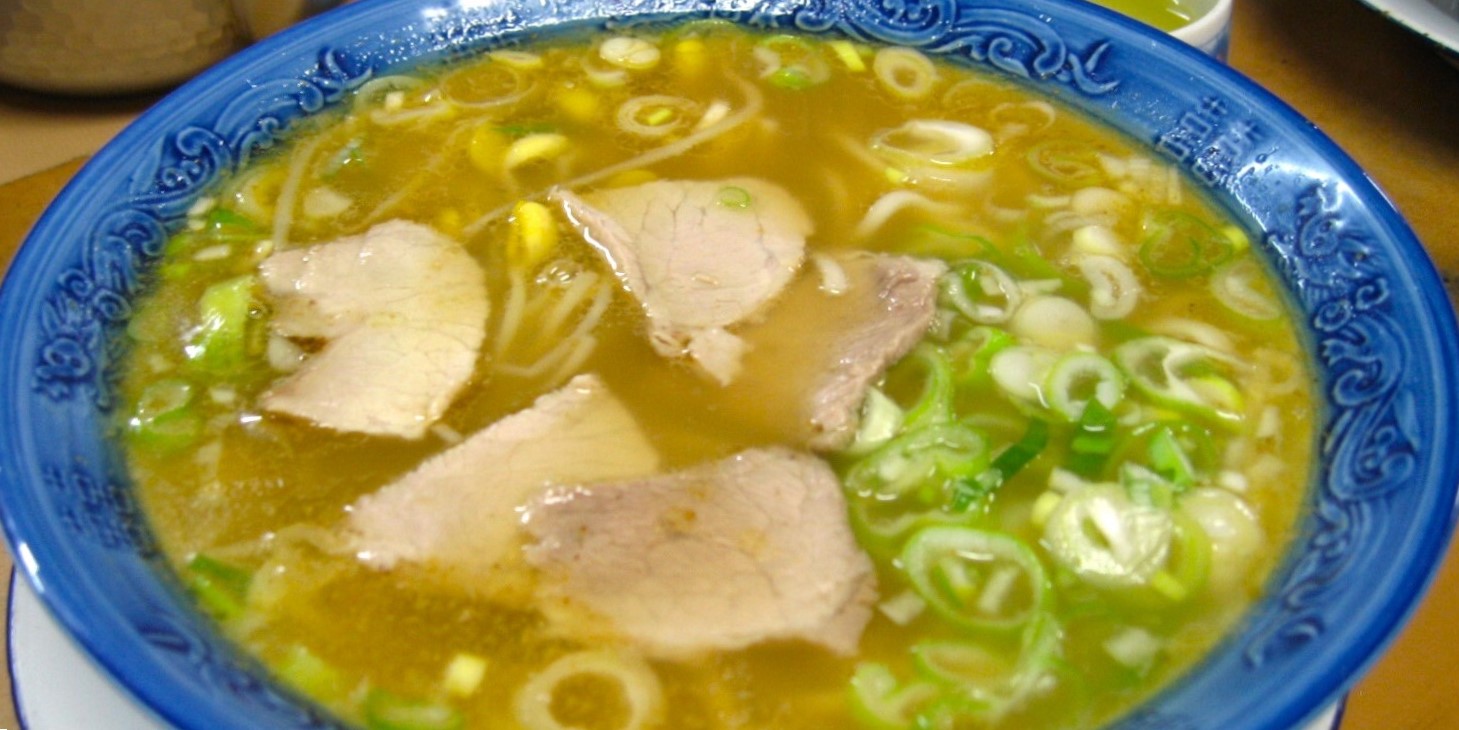
What is Kagoshima Ramen(鹿児島ラーメン)?
It is a type of ramen that can be eaten at specialty shops in and around Kagoshima Prefecture, and is a unique type of ramen in Kyushu that has not been influenced by Kurume ramen(久留米ラーメン).
They have a lot of vegetables, some use brine-less(lye-less water) noodles, some use rice noodles (ビーフン Biihun), the noodles are soft, the price range is high, the soup is added at the end, and pickles such as radish are provided free of charge, tea served in a small teapot, and charred green onions (called grilled green onions;焼きネギ Yaki Negi) are served on top, making it a unique ramen culture.
Gentle taste of bean sprouts and cabbage
Kagoshima ramen also has a cloudy soup. However, the trend for pork bone and chicken bones is slightly different from other prefectures. While other regions have traced their origins to Kurume, the birthplace of tonkotsu, only Kagoshima seems to have developed it separately. The first Kagoshima ramen was Noboru-ya(のぼる屋), opened in 1947 by Tsuna Michioka(道岡ツナ). She learned this from a Chinese patient when she was a nurse in Yokohama. However, she added her own improvements. Vegetables were added to reduce the smell and greasiness, and Kansui(brine,lye water) was not used in the noodles. In this way, Kagoshima ramen was created with the attentiveness of a woman and a nurse.
Perhaps because the “creator” was a woman, there is a strong presence of women in Kagoshima’s ramen shops. In many shops, women are in charge of even the heavy lifting.
Another major feature is the vegetable topping. There are lots of bean sprouts and cabbage. It is also unique to Kagoshima that pickles (often lightly pickled daikon radish) are served before the food is ready.
I don’t know if that kind of added value is reflected in the price, but when compared to prices, Kagoshima’s ramen can be said to be the most expensive in Japan. Let’s list some famous shops. “Noboruya(のぼる屋)” is 1000 yen (currently closed as of 2024), “Komurasaki(こむらさき)” is 900 yen (currently 1000 yen), “Kuroiwa(くろいわ)” is 700 yen (currently 800 yen), “Wadaya(和田屋)” miso ramen is 800 yen, ” Zabon(ざぼん)” 750 yen (currently 850 yen). Of course, there are many other cheaper shops, but overall the prices are high.
The noodles everywhere are whitish and thin (thicker than Hakata) straight noodles. Perhaps because the first ramen was like that, there is also no Kansui(brine) noodles. The noodles from Komurasaki, which has been in business for nearly half a century, are worth trying at least once. It seems that the founder made it using the method of making rice noodles, so for first-timers, it may feel quite strange. I actually liked that sense of discomfort. This restaurant has long boasted the highest number of customers and sales in Kagoshima.
It is also distinctive that it is topped with charred green onions and topped with plenty of boiled cabbage and bean sprouts. In Sapporo ramen, stir-fried vegetables are served, but other than Jiro(二郎), Kagoshima is probably the only place in Japan that has such a large amount of boiled cabbage.
“Zabon(ざぼん)” is also amazing in terms of the amount of ingredients it has. Plenty of vegetables, mainly cabbage and chashu pork cut into small pieces. Shredded menma;bamboo shoots and wood ear mushrooms, thin bean sprouts, green onions, and grilled green onions (what we call fried green onions or charred green onions in Tokyo are called in Kagoshima). I ate at the main shop, and they were making ramen on an assembly line at a huge capacity (probably over 100 seats), and they were making a lot of food at a tremendous speed. It was amazing to watch.
The soup is cloudy and contains pork bones and chicken bones in a ratio of 7:3 or 6:4. Some shops add vegetables or shiitake mushrooms to it. The sauce is soy sauce.
The most distinctive feature of Kagoshima ramen is the way it is made. Normally, ramen is prepared by adding sauce, soup, and noodles in a bowl, and then adding toppings at the end, but Kagoshima’s ramen is prepared by adding sauce, noodles, and other ingredients, and then pouring the soup over the bowl. Therefore, if you eat it without mixing it, you will feel thin taste. The Kagoshima style is to stir well before eating.
The region has traditionally had a flexible ramen culture, with various types of ramen such as salt, miso, and soy sauce. Recently, Tenmonkan(天文館)’s most popular item, “Ton Toro(豚とろ)”, as the shop’s name suggests, has been gaining acclaim for its chashu made from black pork neck meat. In terms of re-imports from Tokyo, new types of ramen are becoming popular, with Vagabond(バガボンド), originally from the noodle shop Musashi(麺屋武蔵), opening two shops.
As I mentioned earlier, miso ramen is also surprisingly popular in Kagoshima, including the historic Wadaya (和田屋, currently closed), Sanyoken(三養軒), which has a very dark miso, and Sanpei Ramen(三平ラーメン), which is also popular for its black miso and was also born as a cup instant noodles.
Other recommended dishes I’ve eaten include “Ramen Specialty Taka(ラーメン専門 鷹),” where half of the soup stock is made from dried shiitake mushrooms, and “Buccho-Men(仏跳麺),” which are popular after opening as a franchise.
Ramen-Japan / Examples of Ramen Shops
Examples of the long-established Kagoshima ramen shops
-
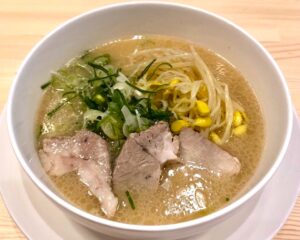
-
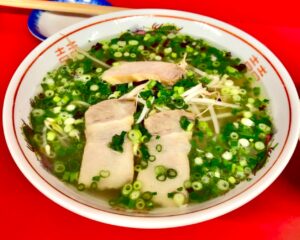
Noriichi Ramen(のり一ラーメン/1949) *Transparent salted chicken soup with charred green onions from Taiwan.
-
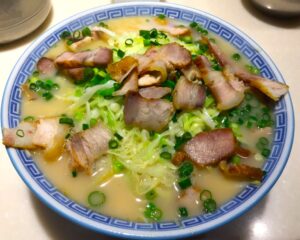
-
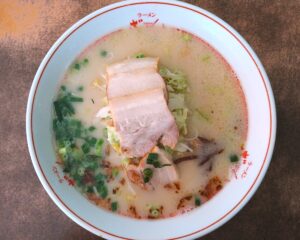
-
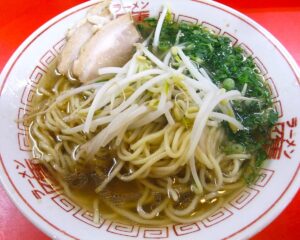
-
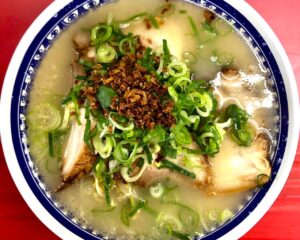
Examples of the miso-based Kagoshima ramen shops
-
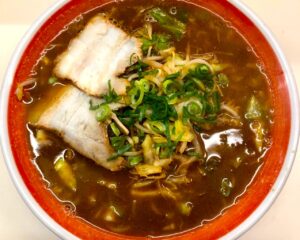
-
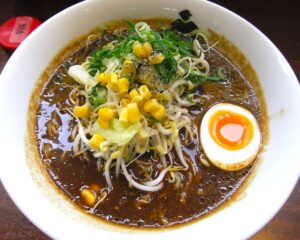
Sanpei Ramen Terukuni Main Shop(三平らーめん 照国本店) *Dark-flavored black miso ramen.
-
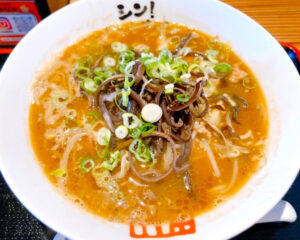
Shin! Wadaya(シン!わだや) *Reproduces the taste of the long-established Wadaya(和田屋)
Examples of popular Kagoshima ramen shops
-
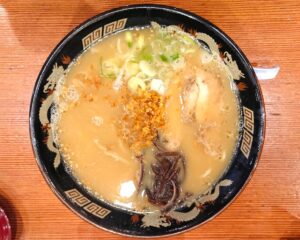
Kagoshima Ramen Ton Toro Tenmonkan Main Branch(鹿児島ラーメン豚とろ 天文館本店) *Famous for pork neck chashu.
-
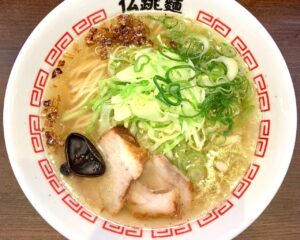
-
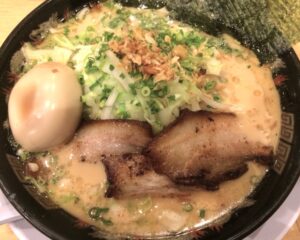
-
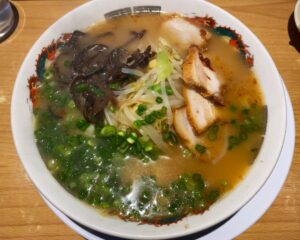
-
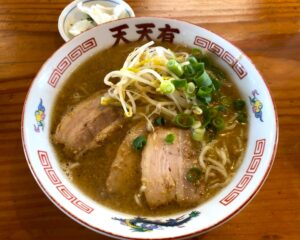
-
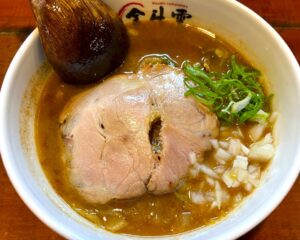
-
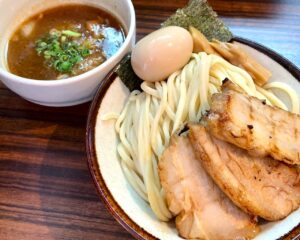
-
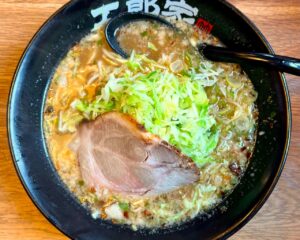
-
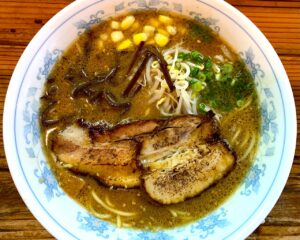
Makoto Ramen(まことラーメン) *Honkarebushi (aged bonito flakes) is added to the seafood and pork bone soup.
-
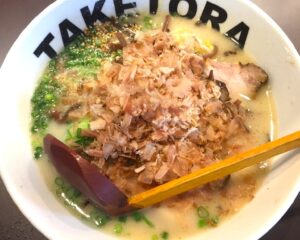
-
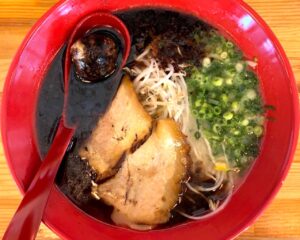
Menya Gou(麺屋 剛) *Black soup is made with charcoal and red soup is made with spices. Clear taste.
-
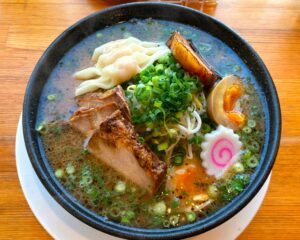
Menya Jiro(麺屋二郎) *Kagoshima ramen that has won the New York Ramen Contest for two consecutive years.

